Service Alert
Le 1 juillet, Fête du Canada
À l’occasion de la Fête du Canada, le CAÉB sera fermé le mardi 1 juillet. Les heures d’opération régulières reprendront le mercredi 2 juillet. Nous vous souhaitons un bon congé!
À l’occasion de la Fête du Canada, le CAÉB sera fermé le mardi 1 juillet. Les heures d’opération régulières reprendront le mercredi 2 juillet. Nous vous souhaitons un bon congé!
Articles 1489401 à 1489420 sur 1500239
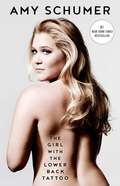
Par Amy Schumer. 2016
“Amy’s got your back. She’s in your corner. She’s an honesty bomb. And she’s coming for you.” —Actress Tilda Swinton…
and Trainwreck co-star The Emmy Award-winning comedian, actress, writer, and star of Inside Amy Schumer and the acclaimed film Trainwreck has taken the entertainment world by storm with her winning blend of smart, satirical humor. Now, Amy Schumer has written a refreshingly candid and uproariously funny collection of (extremely) personal and observational essays. In The Girl with the Lower Back Tattoo, Amy mines her past for stories about her teenage years, her family, relationships, and sex and shares the experiences that have shaped who she is—a woman with the courage to bare her soul to stand up for what she believes in, all while making us laugh. Ranging from the raucous to the romantic, the heartfelt to the harrowing, this highly entertaining and universally appealing collection is the literary equivalent of a night out with your best friend—an unforgettable and fun adventure that you wish could last forever. Whether she’s experiencing lust-at-first-sight while in the airport security line, sharing her own views on love and marriage, admitting to being an introvert, or discovering her cross-fit instructor’s secret bad habit, Amy Schumer proves to be a bighearted, brave, and thoughtful storyteller that will leave you nodding your head in recognition, laughing out loud, and sobbing uncontrollably—but only because it’s over. A New York Times Bestseller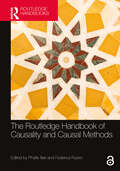
Par Phyllis Illari, Federica Russo. 2025
The Routledge Handbook of Causality and Causal Methods adopts a pluralistic, interdisciplinary approach to causality. It formulates distinct questions and…
problems of causality as they arise across scientific and policy fields. Exploring, in a comparative way, how these questions and problems are addressed in different areas, the Handbook fosters dialogue and exchange. It emphasizes the role of the researchers and the normative considerations that arise in the development of methodological and empirical approaches. The Handbook includes authors from all over the world and with many different disciplinary backgrounds, and its 50 chapters appear in print here for the first time. The chapters are organized into the following seven parts: Causal Pluralism from Theory to Practice Causal Theory and the Role of Researchers Features of Causal Systems Causal Methods, Experimentation and Observation Measurement and Data Causality, Knowledge, and Action Causal Theory across Disciplinary Borders Essential reading for scholars interested in an interdisciplinary approach to causality and causal methods, the volume is also a valuable resource for advanced undergraduates as well as for graduate students interested in delving into the rich field of causality.Chapters 15 and 36 of this book are freely available as downloadable Open Access PDFs at http://www.taylorfrancis.com under a Creative Commons [Attribution-Non Commercial-No Derivatives (CC-BY-NC-ND)] 4.0 license.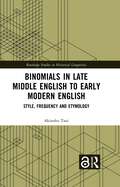
This book charts the development of style and lexicon in the English language from Late Middle English to Early Modern…
English through the analysis of binomials across a wide range of texts and genres.The volume elucidates the forms, functions, and origins of binomials, otherwise understood as word pairs, such as “safe and sound,” as they manifest in representative prose texts from the fourteenth and fifteenth centuries and in the Helsinki Corpus from the fourteenth through to the early eighteenth centuries. The book begins with cross-comparative analyses of binomials, examining their frequency, etymological makeup, and repetition in prose texts including Chaucer and Malory to explore the stylistic characteristics of each text, toward zooming out to examine their development in texts across different genres, from political to philosophical to legal texts, in the Helsinki Corpus. In charting binomial development over both time and text type, the volume offers readers a unique historical perspective into the evolution of phraseology from Late Middle English through to Early Modern English and in turn, a solid foundation for future research on lexical development in the English language.This book will be of interest to scholars in English historical linguistics, English stylistics, English corpus linguistics, and English lexicology.Chapter 8 of this book is freely available as a downloadable Open Access PDF at http://www.taylorfrancis.com under a Creative Commons Attribution-NonCommercial-NoDerivatives (CC-BY-NC-ND) 4.0 International license.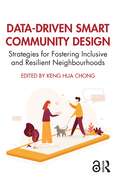
Par Keng Hua Chong. 2025
This book couples data analytics with social behavioural studies and participatory design to derive deeper insights on city dwellers’ present…
needs and future aspirations, thereby enabling the development of targeted spatial and programmatic interventions for diverse communities.Public housing in Singapore has been regarded internationally as a success story. This book outlines the latest strategies and concepts for addressing the emerging social challenges of the ageing population: shrinking household size, increasingly diverse demographics and widening inequality, and fostering inclusive and resilient neighbourhoods. Adopting an interdisciplinary approach, this book: Outlines an innovative data-driven planning process for housing neighbourhood and community design Provides a framework for planners and designers to synthesise qualitative and quantitative data analyses Presents a comprehensive set of tested urban analytics tools, digital platforms and participatory toolkits used to design and develop community initiatives. A recommended text for students undertaking urban planning, urban design, housing design, architecture, real estate, urban sociology and community design, the book’s strategies for evidence-based neighbourhood designs will also appeal to practitioners and policymakers.The Open Access version of this book, available at www.taylorfrancis.com, has been made available under a Creative Commons [Attribution-Non Commercial-No Derivatives (CC-BY-NC-ND)] 4.0 license.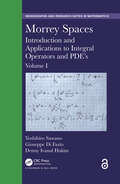
Morrey spaces were introduced by Charles Morrey to investigate the local behaviour of solutions to second order elliptic partial differential…
equations. The technique is very useful in many areas in mathematics, in particular in harmonic analysis, potential theory, partial differential equations and mathematical physics.Across two volumes, the authors of Morrey Spaces: Introduction and Applications to Integral Operators and PDEs discuss the current state of art and perspectives of developments of this theory of Morrey spaces, with the emphasis in Volume I focused mainly on harmonic analysis.Features Provides a ‘from-scratch’ overview of the topic readable by anyone with an understanding of integration theory Suitable for graduate students, masters course students, and researchers in PDE's or Geometry Replete with exercises and examples to aid the reader’s understanding The Open Access version of this book, available at http://www.taylorfrancis.com, has been made available under a Creative Commons [Attribution-Non Commercial-No Derivatives (CC BY-NC-ND)] 4.0 license.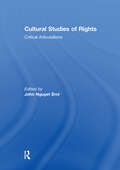
Par John Nguyet Erni. 2012
At a time of global uncertainties and erosion of liberties, how will cultural studies clear a space for a parallel…
intellectual and political engagement with human rights practice? How will human rights thinking be liberated from its doctrinal approach to ethics and legal justice? This book forges an alliance between cultural studies and human rights scholarships, to help us better understand the changing and complex political context that continuously shapes contemporary violence. To date, interdisciplinary dialogue or institutional collaboration remains rare across the two domains, resulting in critical interpretive work appearing too vacuous at times and institutional legal work often trapped in doctrinalism. By opening a door for a new and engaging scholarship, this book will re-ignite debates and passions within communication and critical cultural studies in the search for global justice.This book was originally published as a special issue of Communication and Critical/Cultural Studies.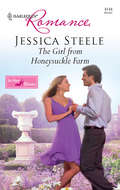
Par Jessica Steele. 2009
Phinn Hawkins is a stable girl happy with mud on her boots and straw in her hair...She's not fooled by…
eligible bachelor Ty Allardyce's good looks and sinful smile--he's impossibly arrogant and annoying!Ty's a hotshot London financier, pin-striped from tip to toe...And he's bought Phinn's beloved Honeysuckle Farm. He thinks she's quietly packing her bags, but Phinn won't leave without a fight....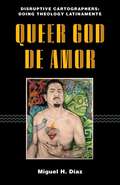
Par Miguel H. Díaz. 2022
Queer God de Amor explores the mystery of God and the relationship between divine and human persons. It does so…
by turning to the sixteenth-century writings of John of the Cross on mystical union with God and the metaphor of sexual relationship that he uses to describe this union. Juan’s mystical theology, which highlights the notion of God as lover and God’s erotic-like relationship with human persons, provides a fitting source for rethinking the Christian doctrine of God, in John’s own words, as “un no sé qué,” “an I know not what.”In critical conversations with contemporary queer theologies, it retrieves from John a preferential option for human sexuality as an experience in daily life that is rich with possibilities for re-sourcing and imagining the Christian doctrine of God. Consistent with other liberating perspectives, it outs God from heteronormative closets and restores human sexuality as a resource for theology. This outing of divine queerness—that is, the ineffability of divine life—helps to align reflections on the mystery of God with the faith experiences of queer Catholics. By engaging Juan de la Cruz through queer Latinx eyes, Miguel Díaz continues the objective of this series to disrupt the cartography of theology latinamente.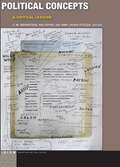
Par Ann Laura Stoler, Adi M. Ophir. 2018
Deciding what is and what is not political is a fraught, perhaps intractably opaque matter. Just who decides the question;…
on what grounds; to what ends—these seem like properly political questions themselves. Deciding what is political and what is not can serve to contain and restrain struggles, make existing power relations at once self-evident and opaque, and blur the possibility of reimagining them differently. Political Concepts seeks to revive our common political vocabulary—both everyday and academic—and to do so critically. Its entries take the form of essays in which each contributor presents her or his own original reflection on a concept posed in the traditional Socratic question format “What is X?” and asks what sort of work a rethinking of that concept can do for us now.The explicitness of a radical questioning of this kind gives authors both the freedom and the authority to engage, intervene in, critique, and transform the conceptual terrain they have inherited. Each entry, either implicitly or explicitly, attempts to re-open the question “What is political thinking?” Each is an effort to reinvent political writing. In this setting the political as such may be understood as a property, a field of interest, a dimension of human existence, a set of practices, or a kind of event. Political Concepts does not stand upon a decided concept of the political but returns in practice and in concern to the question “What is the political?” by submitting the question to a field of plural contention.The concepts collected in Political Concepts are “Arche” (Stathis Gourgouris), “Blood” (Gil Anidjar), “Colony” (Ann Laura Stoler), “Concept” (Adi Ophir), “Constituent Power” (Andreas Kalyvas), “Development” (Gayatri Spivak), “Exploitation” (Étienne Balibar), “Federation” (Jean Cohen), “Identity” (Akeel Bilgrami), “Rule of Law” (J. M. Bernstein), “Sexual Difference” (Joan Copjec), and “Translation” (Jacques Lezra)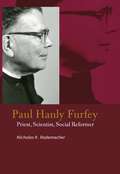
Par Nicholas K. Rademacher. 2017
Nicholas Rademacher’s book is meticulously researched and clearly written, shedding new light on Monsignor Paul Hanly Furfey’s life by drawing…
on Furfey’s copious published material and substantial archival deposit. Paul Hanly Furfey (1896–1992) is one of U.S. Catholicism’s greatest champions of peace and social justice. He and his colleagues at The Catholic University of America offered a revolutionary view of the university as a center for social transformation, not only in training students to be agents for social change but also in establishing structures which would empower and transform the communities that surrounded the university. In part a response to the Great Depression, their social settlement model drew on the latest social scientific research and technique while at the same time incorporating principles they learned from radical Catholics like Dorothy Day and Catherine de Hueck Doherty. Likewise, through his academic scholarship and popular writings, Furfey offered an alternative vision of the social order and identified concrete steps to achieve that vision. Indeed, Furfey remains a compelling exemplar for anyone who pursues truth, beauty, and justice, especially within the context of higher education and the academy.Leaving behind an important legacy for Catholic sociology, Furfey demonstrated how to balance liberal, radical, and revolutionary social thought and practice to elicit new approaches to social reform.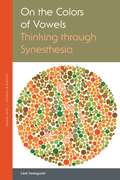
Par Liesl Yamaguchi. 2025
Treatments of synesthesia in the arts and humanities generally assume a clear distinction between the neurological condition and the literary…
device. Synesthetes’ descriptions of colors seen in connection with music, for example, are thought to differ fundamentally from common expressions that rely on transpositions across sensory dimensions (“bright vowels”). This has not always been the case. The distinction emerged over the course of the twentieth century, as scientists sought to constitute “synesthesia” as a legitimate object of modern science.On the Colors of Vowels investigates the ambiguity of visual descriptions of vowels across a wide range of disciplines, casting several landmark texts in a wholly new light. The book traces the migration of sound-color correspondence from its ancient host (music) to its modern one (vowels), investigating the vocalic Klangfarben of Hermann von Helmholtz’s monumental Sensations of Tone, the vowel colors reported in early psychology surveys into audition colorée (colored hearing), the mis-matched timbres that form poetry’s condition of possibility in Stéphane Mallarmé’s “Crisis of Verse,” and the vowel-color analogy central to both the universal alphabets of the nineteenth century and the phonological universals of the twentieth. The book’s final chapter turns to an intricately detailed account of vowel-color correspondence by Ferdinand de Saussure, suggesting how the linguist’s sensitivity to vowel coloration may have guided his groundbreaking study of Indo-European vocalism.Bringing out the diverse ways in which visual conceptions of vowels have inflected the arts and sciences of modernity, On the Colors of Vowels makes it possible to see how discourses of the nineteenth and twentieth centuries crafted the enigma we now readily recognize as “synesthesia.”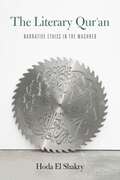
Par Hoda El Shakry. 2020
Winner, 2020 Aldo and Jeanne Scaglione Prize for Comparative Literary Studies, Modern Language AssociationThe novel, the literary adage has it,…
reflects a world abandoned by God. Yet the possibilities of novelistic form and literary exegesis exceed the secularizing tendencies of contemporary literary criticism. Showing how the Qurʾan itself invites and enacts critical reading, Hoda El Shakry’s Qurʾanic model of narratology enriches our understanding of literary sensibilities and practices in the Maghreb across Arabophone and Francophone traditions. The Literary Qurʾan mobilizes the Qurʾan’s formal, narrative, and rhetorical qualities, alongside embodied and hermeneutical forms of Qurʾanic pedagogy, to theorize modern Maghrebi literature. Challenging the canonization of secular modes of reading that occlude religious epistemes, practices, and intertexts, it attends to literature as a site where the process of entextualization obscures ethical imperatives. Engaging with the Arab-Islamic tradition of adab—a concept demarcating the genre of belles lettres, as well as social and moral comportment—El Shakry demonstrates how the critical pursuit of knowledge is inseparable from the spiritual cultivation of the self.Foregrounding form and praxis alike, The Literary Qurʾan stages a series of pairings that invite paratactic readings across texts, languages, and literary canons. The book places twentieth-century novels by canonical Francophone writers (Abdelwahab Meddeb, Assia Djebar, Driss Chraïbi) into conversation with lesser-known Arabophone ones (Maḥmūd al-Masʿadī, al-Ṭāhir Waṭṭār, Muḥammad Barrāda). Theorizing the Qurʾan as a literary object, process, and model, this interdisciplinary study blends literary and theological methodologies, conceptual vocabularies, and reading practices.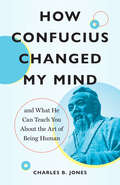
Par Charles B. Jones. 2025
A compelling exploration of humanity, morality, religious practice, and leading a good life based on traditional Confucian thought.In this exploration…
of humanity, morality, religious practice, and leading a good life based on traditional Confucian thought, you are invited on a path of transformation. The unexpected depths to be found in Confucianism surprised author Charles Jones when he began teaching East Asian religions to undergraduate students thirty years ago. It raised fascinating questions relevant to life today, like what does it mean to be human? To understand the Confucian answers to these questions, Jones familiarizes us with Confucius, his main successors, and the situations to which their writings responded.But this is not another textbook introduction to Chinese religion and thought. Jones is an engaging, inquisitive scholar and thought provocateur whose ideas address problems all of us face throughout our lives. By engaging with the Confucian ideas explored in this book, like rethinking &“human nature&” and uncovering cultural presuppositions previously unnoticed, you might discover new horizons and possibilities for your life that previously you never could have imagined. And you will discover Confucius in an all-new light as a profound shaper of modern thought as much as Aristotle and Lao-tzu—whose revolutionary ideas have the power to change your mind for the better.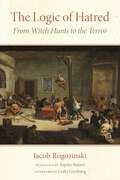
Par Jacob Rogozinski. 2024
This book works to uncover the logic of hatred, to understand how this affect manifests itself historically in persecution and…
terror apparatuses. More than a historical genealogy of persecution, The Logic of Hatred shows what phenomenology can offer to historical understanding. Focusing on the witch-hunts waged in the fifteenth through seventeenth centuries, the first part of the book analyzes the techniques instigators used to designate and annihilate their targets: the search for diabolical stigma, the confession of “truth” extracted by torture, the constitution of an absolute Enemy through the suggestion of conspiracy, of a world turned upside-down, or the figure of Satan.Rogozinski locates one of the origins of the witch-hunt in the anguish that popular uprisings arouse in dominant classes. The second part of the book extends the investigation to related phenomena, such as the extermination of lepers in the Middle Ages and the Reign of Terror during the French Revolution. By studying these historical experiences and marking their differences and similarities, this book shows the passage from exclusion to persecution and how revolts of the oppressed can let themselves be transformed and captured by persecutory politics. The analyses presented thus shed light on conspiracy theory and the terror apparatuses of our time.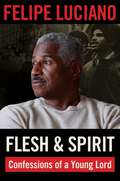
Par Felipe Luciano. 2024
WINNER, AMERICAN BOOK AWARDChronicles a Black Puerto Rican man’s odyssey and transformation from an incarcerated gang member to the Co-Founder…
of the Young Lords Party.Growing up fatherless and poor, Felipe Luciano didn’t yearn for wealth or dream of becoming a famous actor or athlete. He was tired of being poor and ached to be a man, to reach that point of sagacity, courage, and independence that would signal to the world that he was now a warrior, ready to fight the battle for truth and justice, to slay the dragon of evil, whatever that might be. In Flesh and Spirit, Luciano paints a vivid portrait of his life in New York City as a member of the city’s Latino community as well as his pivotal role in the Young Lords and The Last Poets.Luciano’s memoir begins when as a teenage Brooklyn gang member he is convicted of manslaughter. This pivotal moment changes the trajectory of his life. The American kid raised on Davy Crockett and Superman TV tales emerged from the womb of prison into a harsh, new monochromatic black/white world without the benefit of rose-colored glasses. It was a painful shattering of all his childhood beliefs and the realization that he was a poor Black Puerto Rican in white America clutching onto values that didn’t work. The only flotsam in this churning sea of ’60s social turmoil was college, poetry, revolutionary activity, and sometimes God. After getting an education, Luciano went on to become an acclaimed poet and political activist who advocates for the Latino population of New York City, for the kids growing up in the same circumstances he did.Sparing no one—not the revolutionaries, the Revolution, nor the author himself—Flesh and Spirit is written with honesty and humility to help guide young people of color and other Americans through the labyrinths of ideology, organization, missteps, false paths, and phony societal promises.Featuring archival photographs by Michael Abramson reproduced from Palante: Voices and Photographs of the Young Lords, 1969-1971 © 2011 Haymarket Books.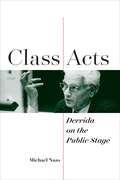
Par Michael Naas. 2021
Class Acts examines two often neglected aspects of Jacques Derrida’s work as a philosopher, his public presentations at lectures and…
conferences and his teaching, along with the question of the “speech act” that links them. What, Michael Naas asks, is one doing when one speaks in public in these ways?The book follows Derrida’s itinerary with regard to speech act theory across three public lectures, from 1971 to 1997, all given, for reasons the book seeks to explain, in Montreal. In these lectures, Derrida elaborated his critique of J. L. Austin and his own subsequent redefinition of speech act theory. The book then gives an overview of Derrida’s teaching career and his famous “seminar” presentations, along with his own explicit reflections on pedagogy and educational institutions beginning in the mid-1970s. Naas then shows through a reading of three recently published seminars—on life death, theory and practice, and forgiveness—just how Derrida the teacher interrogated and deployed speech act theory in his seminars. Whether in a conference hall or a classroom, Naas demonstrates, Derrida was always interested in the way spoken or written words might do more than simply communicate some meaning or intent but might give rise to something like an event. Class Acts bears witness to the possibility of such events in Derrida’s work as a pedagogue and a public intellectual.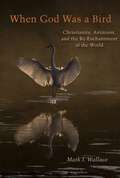
2019 NAUTILUS GOLD WINNERIn a time of rapid climate change and species extinction, what role have the world’s religions played…
in ameliorating—or causing—the crisis we now face? Religion in general, and Christianity in particular, appears to bear a disproportionate burden for creating humankind’s exploitative attitudes toward nature through unearthly theologies that divorce human beings and their spiritual yearnings from their natural origins. In this regard, Christianity has become an otherworldly religion that views the natural world as “fallen,” as empty of signs of God’s presence.And yet, buried deep within the Christian tradition are startling portrayals of God as the beaked and feathered Holy Spirit – the “animal God,” as it were, of historic Christian witness. Through biblical readings, historical theology, continental philosophy, and personal stories of sacred nature, this book recovers the model of God in Christianity as a creaturely, avian being who signals the presence of spirit in everything, human and more-than-human alike. Mark Wallace’s recovery of the bird-God of the Bible signals a deep grounding of faith in the natural world. The moral implications of nature-based Christianity are profound. All life is deserving of humans’ care and protection insofar as the world is envisioned as alive with sacred animals, plants, and landscapes. From the perspective of Christian animism, the Earth is the holy place that God made and that humankind is enjoined to watch over and cherish in like manner. Saving the environment, then, is not a political issue on the left or the right of the ideological spectrum, but, rather, an innermost passion shared by all people of faith and good will in a world damaged by anthropogenic warming, massive species extinction, and the loss of arable land, potable water, and breathable air. To Wallace, this passion is inviolable and flows directly from the heart of Christian teaching that God is a carnal, fleshy reality who is promiscuously incarnated within all things, making the whole world a sacred embodiment of God’s presence, and worthy of our affectionate concern. This beautifully and accessibly written book shows that “Christian animism” is not a strange oxymoron, but Christianity’s natural habitat. Challenging traditional Christianity’s self-definition as an other-worldly religion, Wallace paves the way for a new Earth-loving spirituality grounded in the ancient image of an animal God.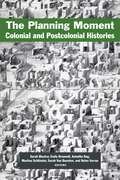
Par Sarah Blacker, Emily Brownell, Anindita Nag, Martina Schlünder, Sarah Van Beurden and Helen Verran. 2024
Empires and their aftermaths were massive planning institutions; in the past two hundred years, the natural and social sciences emerged—at…
least in part—as modes of knowledge production for imperial planning. Yet these connections are frequently under-emphasized in the history of science and its corollary fields. The Planning Moment explores the myriad ways plans and planning practices pervade recent global history. The book is built around twenty-seven brief case studies that explore the centrality of planning in colonial and postcolonial environments, relationships, and contexts, through a range of disciplines: the history of science, science and technology studies, colonial and postcolonial studies, urban studies, and the history of knowledge.If colonialism made certain landscapes, populations, and institutions legible while obscuring others, The Planning Moment reveals the frequently disruptive and violent processes of erasure in imperial planning by examining how “common sense” was produced and how the intransigence of planning persists long after decolonization. In recognizing the resistance and subversion that often met colonial plans, the book makes visible a range of strategies and techniques by which planning was modified and reappropriated, and by which decolonial futures might be imagined.Contributors: Itty Abraham, Benjamin Allen, Sarah Blacker, Emily Brownell, Lino Camprubí, John DiMoia, Mona Fawaz, Lilly Irani, Chihyung Jeon, Robert Kett, Monika Kirloskar-Steinbach, Karen McAllister, Laura Mitchell, Gregg Mitman, Aaron Moore (†), Nada Moumtaz, Tahani Nadim, Anindita Nag, Raúl Necochea López, Tamar Novick, Benjamin Peters, Juno Salazar Parreñas, Martina Schlünder, Sarah Van Beurden, Helen Verran, Ana Carolina Vimieiro Gomes, Alexandra Widmer, and Alden Young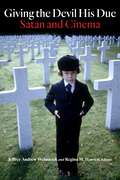
Par Jeffrey Andrew Weinstock and Regina M. Hansen. 2021
Finalist, 2021 Bram Stoker Awards (Superior Achievement in Non-Fiction)The first collection of essays to address Satan’s ubiquitous and popular appearances…
in filmLucifer and cinema have been intertwined since the origins of the medium. As humankind’s greatest antagonist and the incarnation of pure evil, the cinematic devil embodies our own culturally specific anxieties and desires, reflecting moviegoers’ collective conceptions of good and evil, right and wrong, sin and salvation. Giving the Devil His Due is the first book of its kind to examine the history and significance of Satan onscreen. This collection explores how the devil is not just one monster among many, nor is he the “prince of darkness” merely because he has repeatedly flickered across cinema screens in darkened rooms since the origins of the medium. Satan is instead a force active in our lives. Films featuring the devil, therefore, are not just flights of fancy but narratives, sometimes reinforcing, sometimes calling into question, a familiar belief system.From the inception of motion pictures in the 1890s and continuing into the twenty-first century, these essays examine what cinematic representations tell us about the art of filmmaking, the desires of the film-going public, what the cultural moments of the films reflect, and the reciprocal influence they exert. Loosely organized chronologically by film, though some chapters address more than one film, this collection studies such classic movies as Faust, Rosemary’s Baby, The Omen, Angel Heart, The Witch, and The Last Temptation of Christ, as well as the appearance of the Devil in Disney animation.Guiding the contributions to this volume is the overarching idea that cinematic representations of Satan reflect not only the hypnotic powers of cinema to explore and depict the fantastic but also shifting social anxieties and desires that concern human morality and our place in the universe.Contributors: Simon Bacon, Katherine A. Fowkes, Regina Hansen, David Hauka, Russ Hunter, Barry C. Knowlton, Eloise R. Knowlton, Murray Leeder, Catherine O’Brien, R. Barton Palmer, Carl H. Sederholm, David Sterritt, J. P. Telotte, Jeffrey Andrew Weinstock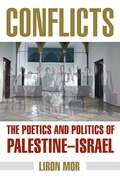
Par Liron Mor. 2024
Liron Mor’s book queries what conflict means in the context of Palestine–Israel. Conflict has long been seen as singular and…
primary: as an “original sin” that necessitates the state and underwrites politics. This book problematizes this universal notion of conflict, revealing its colonial implications and proposing that conflicts are always politically constructed after the fact and are thus to be understood in their various specific forms. The book explores sites of poetic and political strife in Palestine–Israel by combining a comparative study of Hebrew and Arabic literature with political and literary theory. Mor leverages an archive that ranges from the 1930s to the present, from prose and poetry to film and television, to challenge the conception of the Palestinian–Israeli context as a conflict, delineating the colonial history of this concept and showing its inadequacy to Palestine–Israel. Instead, Mor articulates locally specific modes of theorizing the antagonisms and mediations, colonial technologies, and anticolonial practices that make up the fabric of this site. The book thus offers five figurative conflictual concepts that are derived from the poetics of the works: conflict (judgment/ishtibāk), levaṭim (disorienting dilemmas), ikhtifāʾ (anti/colonial disappearance), ḥoḳ (mediating law), and inqisām (hostile severance). In so doing, Conflicts aims to generate a historically and geographically situated mode of theory-making, which defies the separation between the conceptual and the poetic.